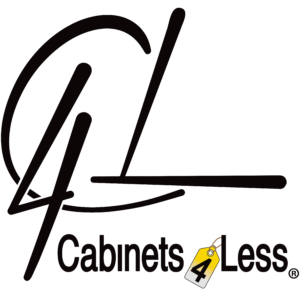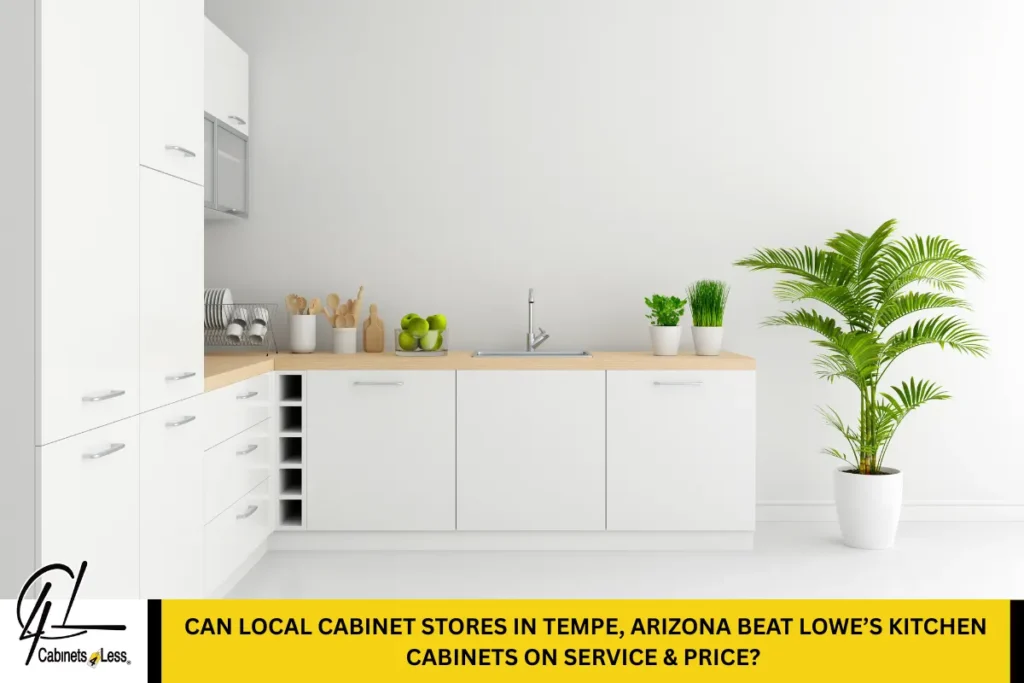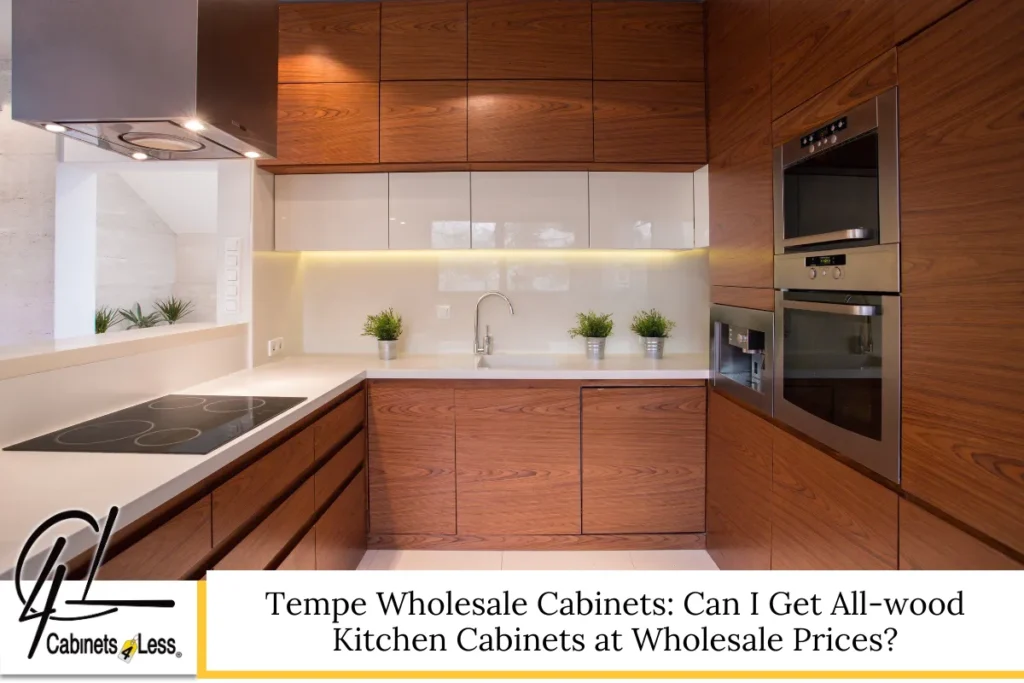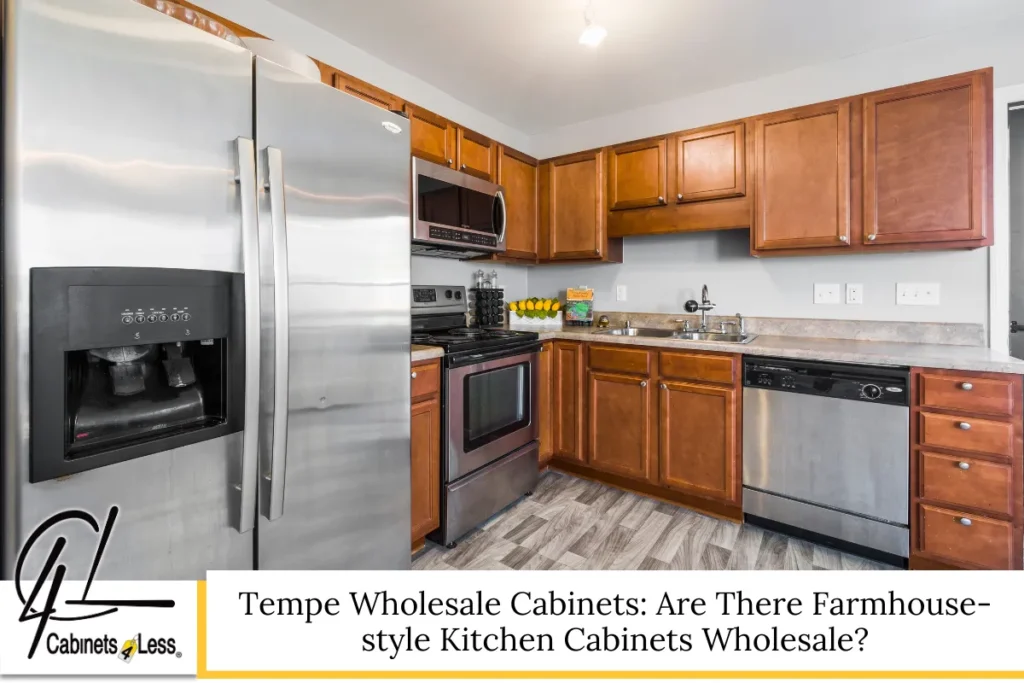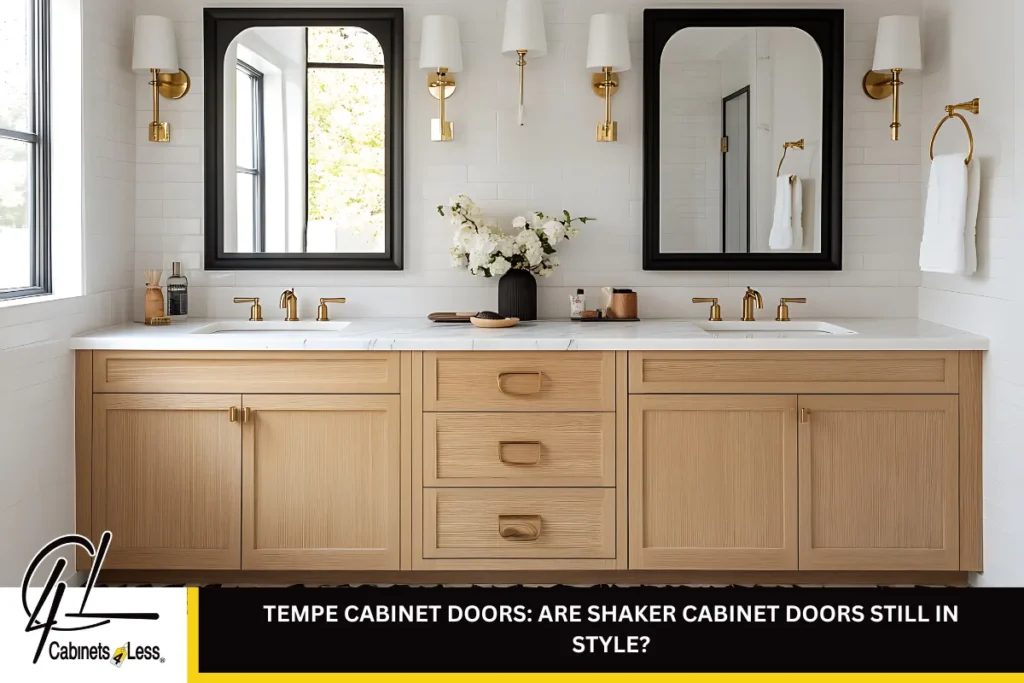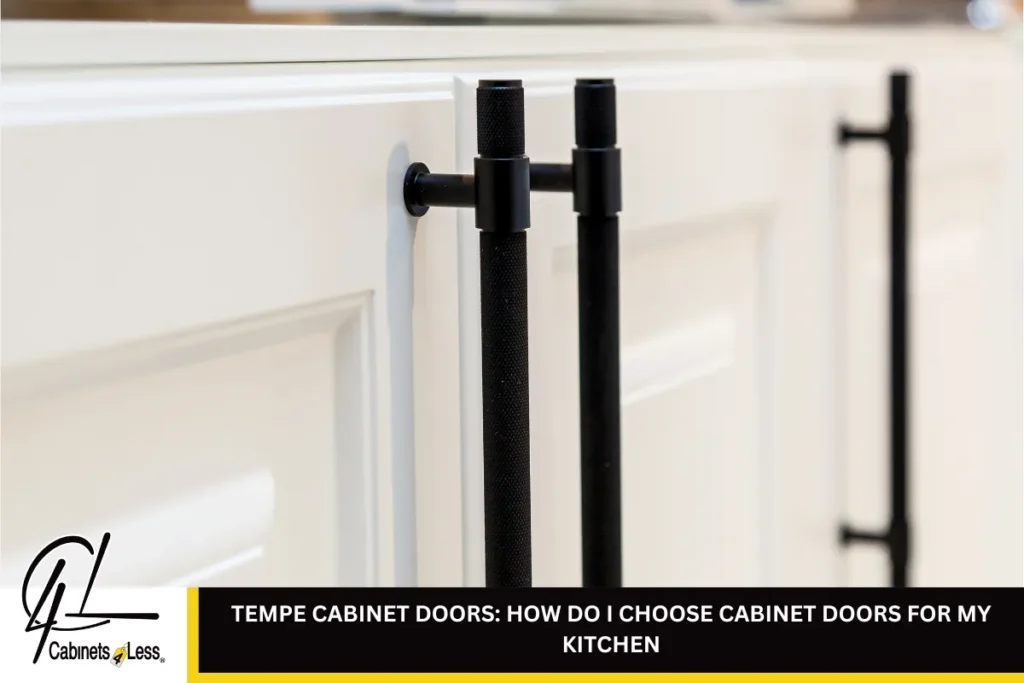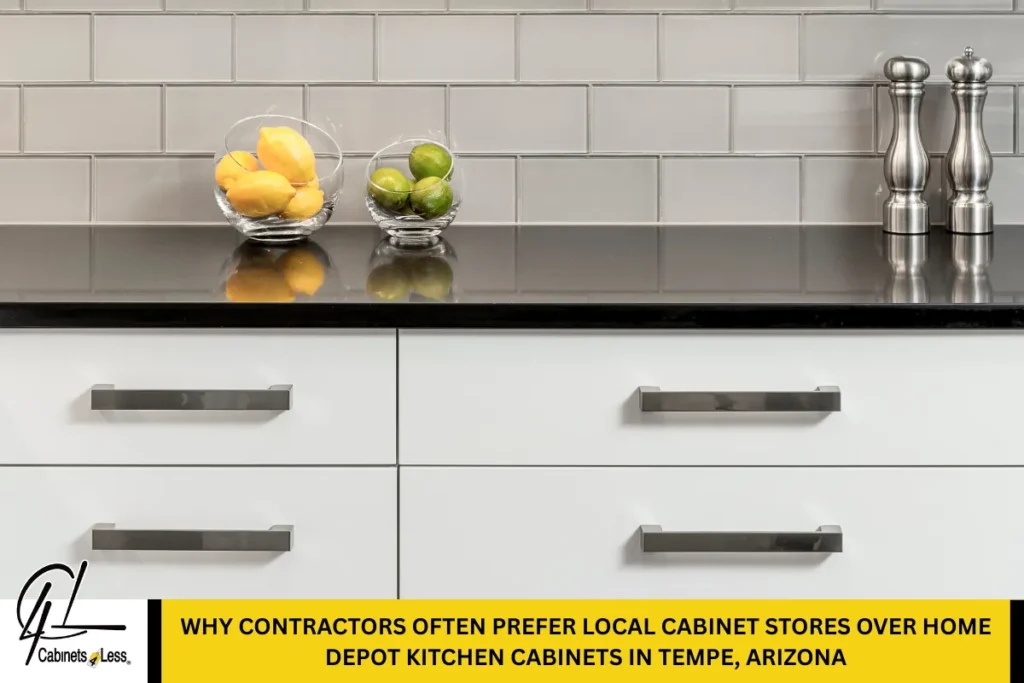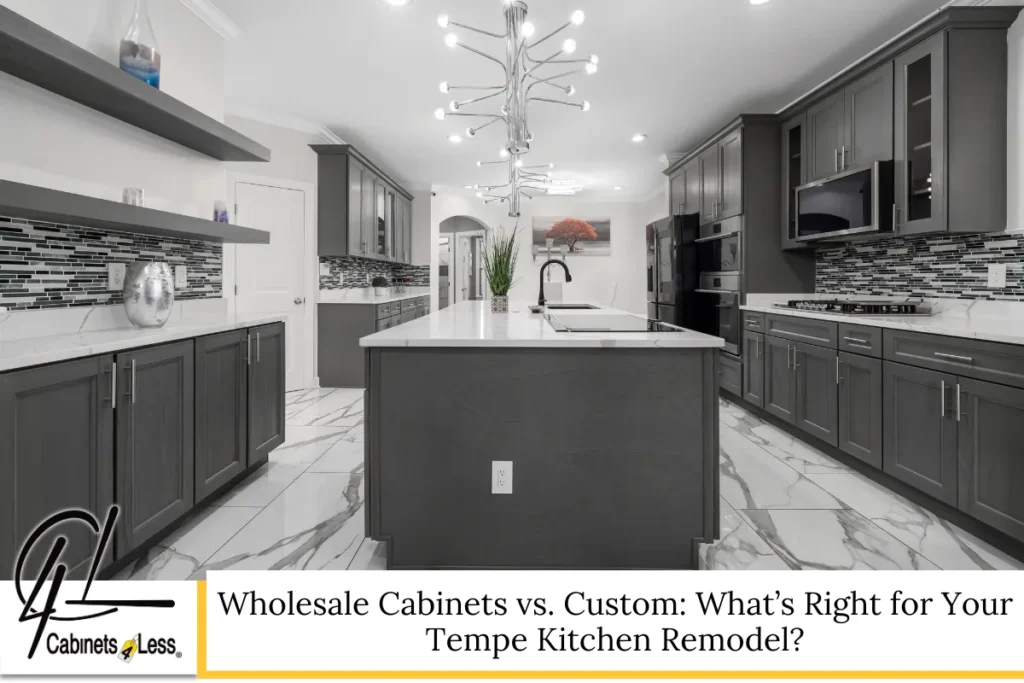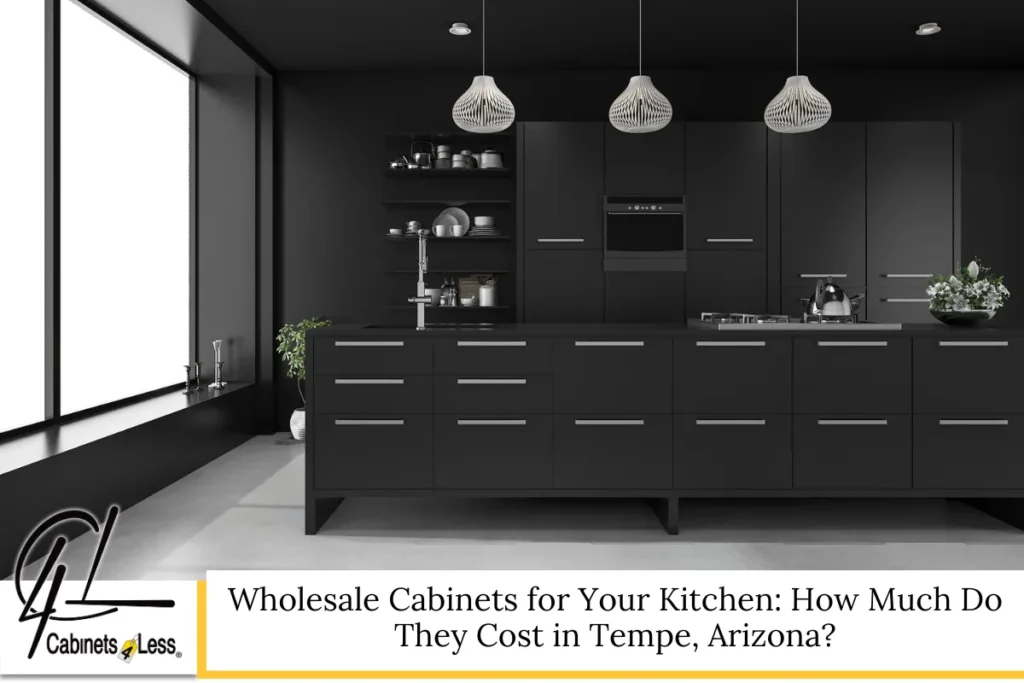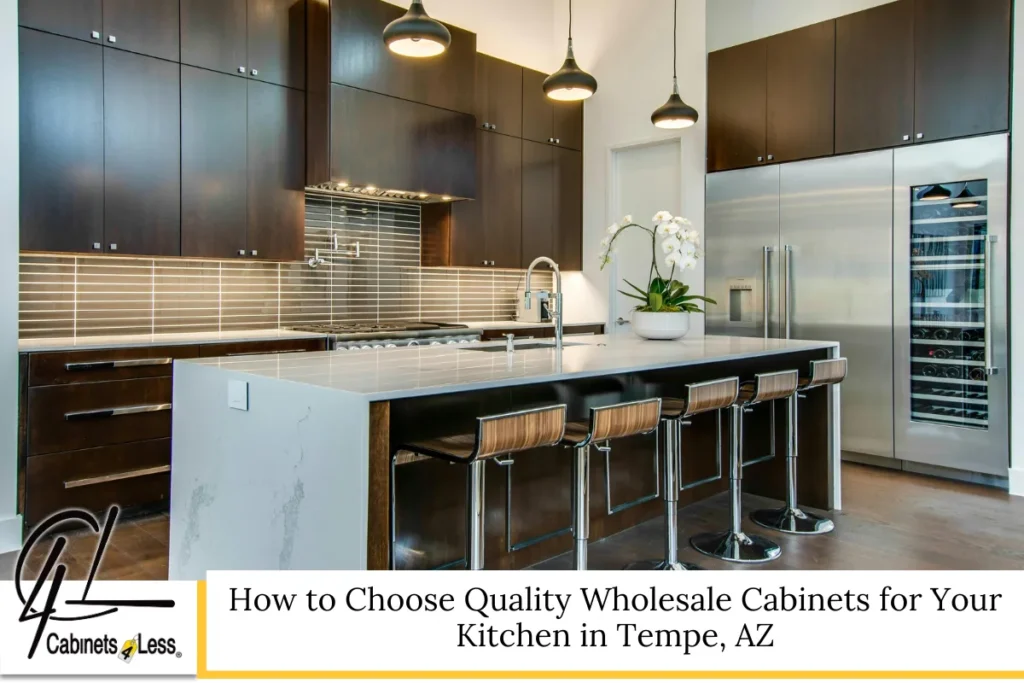Lowe’s kitchen cabinets are often the first option homeowners consider when planning a remodel, thanks to the brand’s national presence and recognizable name. Their accessibility and variety of products make them a go-to destination for those looking to upgrade their kitchen spaces. However, as the remodeling landscape in Tempe, Arizona continues to grow, many homeowners are beginning to explore whether local cabinet stores can offer a better experience—both in terms of service and pricing.
Choosing cabinets is more than just picking out colors and finishes. It’s a critical investment that defines the function and aesthetics of the most-used room in the house. From the materials used to the installation of cabinets, every detail plays a role in the final project’s outcome. This article explores whether locally owned cabinet companies in Tempe provide a better value than big-box stores like Lowe’s, without undermining or comparing unfairly. Instead, we’ll look at service models, pricing transparency, product customization, and customer support to help readers make informed decisions.
Understanding the Cabinet Buying Experience
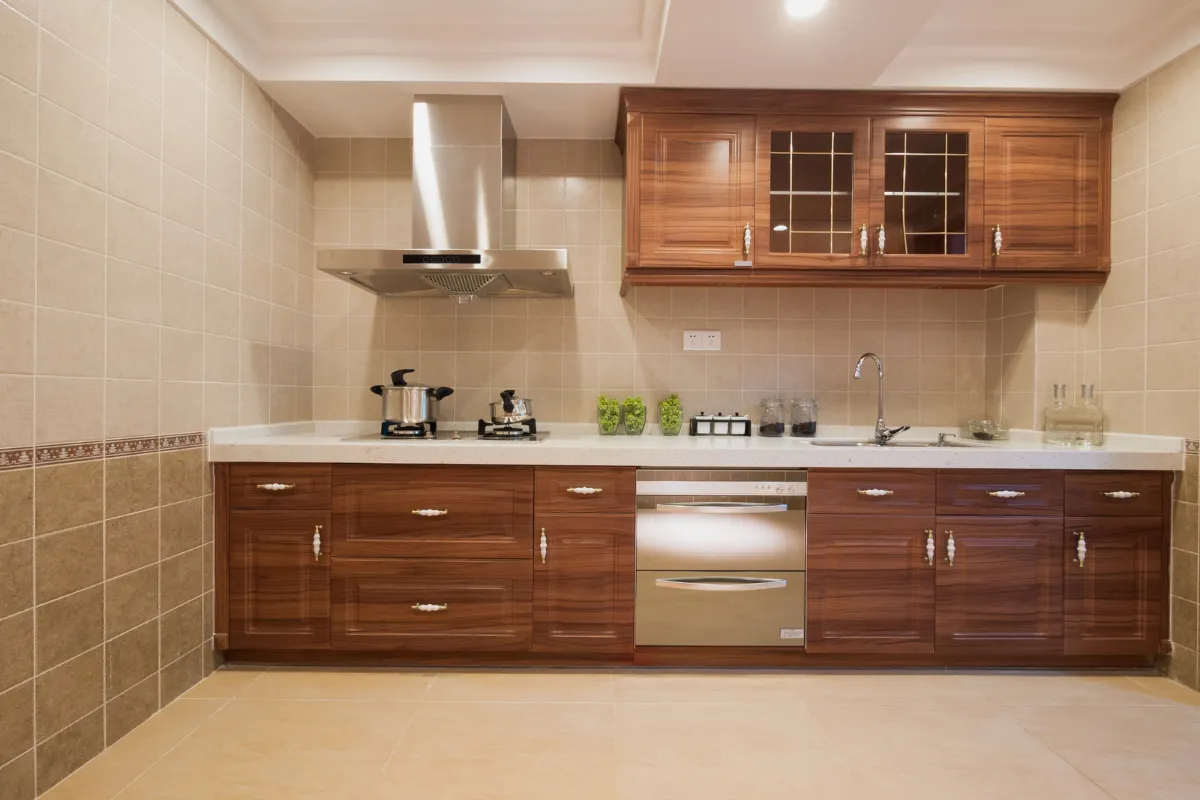
Purchasing kitchen cabinets involves more than browsing a catalog. It requires thoughtful planning, expert advice, and trust in the source you’re buying from. Here’s what the typical cabinet buying journey looks like:
Initial Consultation
An initial consultation helps you evaluate the available space, desired style, and your project’s specific needs. Some cabinet providers offer in-person design meetings, while others rely on virtual tools or generalized templates. The depth of this first step can greatly impact the accuracy of the outcome. Local stores often approach this stage with more flexibility, offering one-on-one guidance to accommodate unique layouts and preferences.
Product Selection and Customization
Selecting cabinetry involves making choices around materials, colors, finishes, door styles, and hardware. Lowe’s provides many preset options from various national manufacturers, which helps speed up the process. However, customization at large retailers can be limited by inventory or standardized supplier models. Local stores may carry a curated selection of materials with customizable components, tailored to meet the client’s vision more closely.
Lead Time and Delivery
Delivery schedules can vary based on order complexity and supplier logistics. Lowe’s typically offers pre-built or semi-custom cabinets with standard lead times, often between 4 to 8 weeks. Local cabinetmakers might provide shorter wait times, especially if their production is regional or in-house. This responsiveness can make a significant difference during time-sensitive remodels.
Service Model and Customer Experience
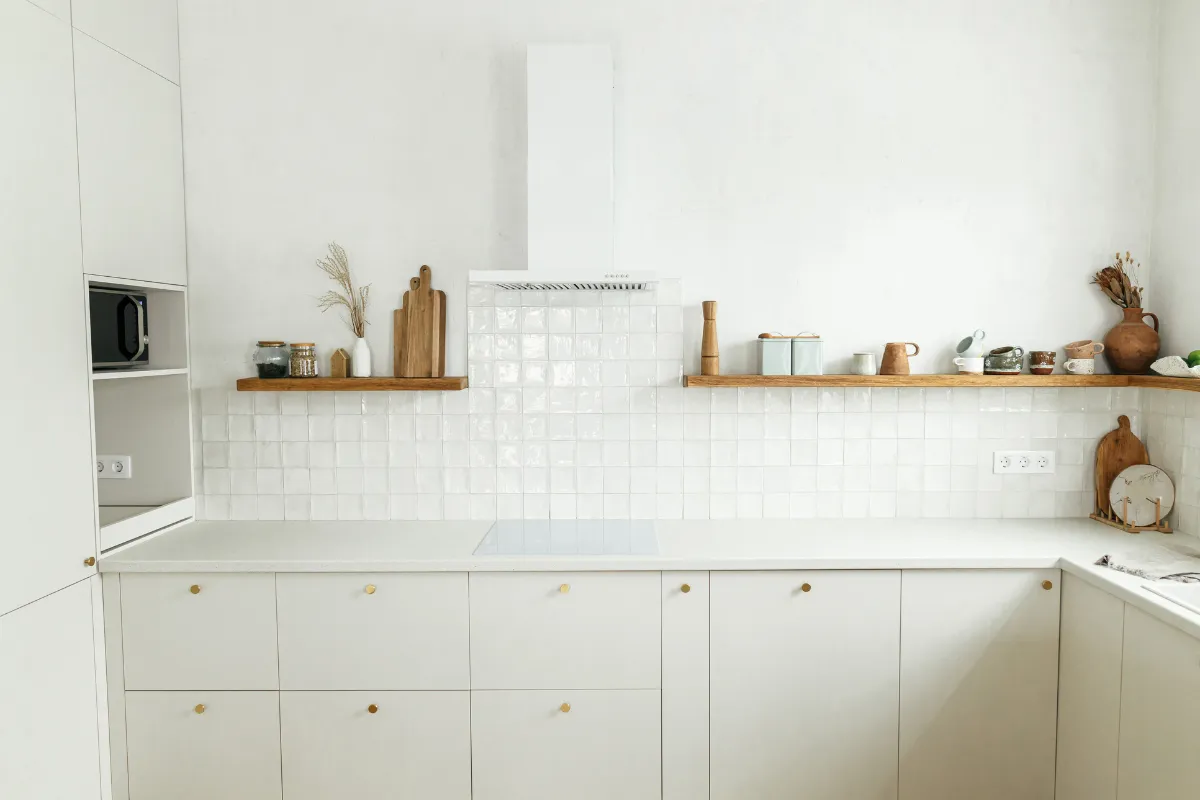
Approachability and Personalization
The service model of a cabinet provider directly affects the client’s overall experience. Lowe’s kitchen department is structured around retail efficiency, with service representatives covering multiple product lines. While staff members are trained across departments, their ability to dive deeply into a project’s unique needs may be limited by time or role constraints.
In contrast, local cabinet shops typically assign a dedicated designer or project coordinator to each client. This focused approach enables better collaboration, personalized advice, and more accurate execution. The process feels more collaborative, with space for dialogue and adjustments as the design progresses.
Accessibility of Design Support
Design support can range from basic sketches to full 3D renderings. Some Lowe’s locations offer software-based visual planning tools, which allow you to preview different layouts. However, local cabinet showrooms often provide more detailed design services and can quickly iterate based on specific feedback. With greater flexibility, homeowners have more opportunities to explore alternatives before finalizing a decision.
Customization, Flexibility, and Style Options
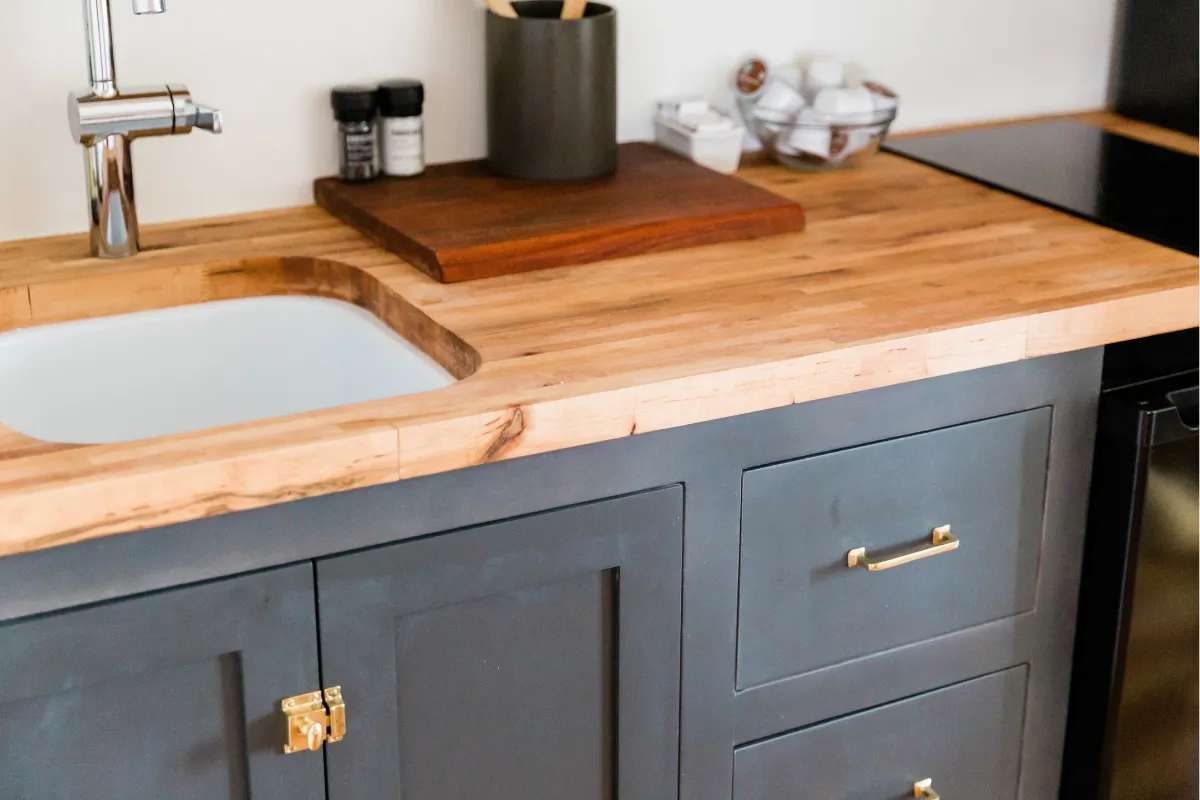
Product Limitations in Standardized Retail
Large-scale retailers operate on standardized product offerings to maintain consistency across all locations. This structure benefits projects with conventional dimensions and styles, but it can limit homeowners with unique tastes or unconventional spaces. The scope for custom orders exists, but may involve long wait times or special order fees.
Local cabinet companies, especially in a growing design-focused city like Tempe, frequently offer broader customization. Clients can modify dimensions, combine styles, or source specialty hardware that aligns more closely with a personal vision. This ability to adapt to the homeowner’s exact needs makes a meaningful difference in satisfaction with the final result.
Specialty Solutions
Beyond kitchens, many local cabinet shops also design for home offices, mudrooms, laundry areas, and bathroom vanities. These solutions are typically more flexible than what’s available off-the-shelf at large retailers. Clients working with smaller businesses may find it easier to align their entire home with a consistent cabinetry theme.
Pricing Transparency and Budget Considerations
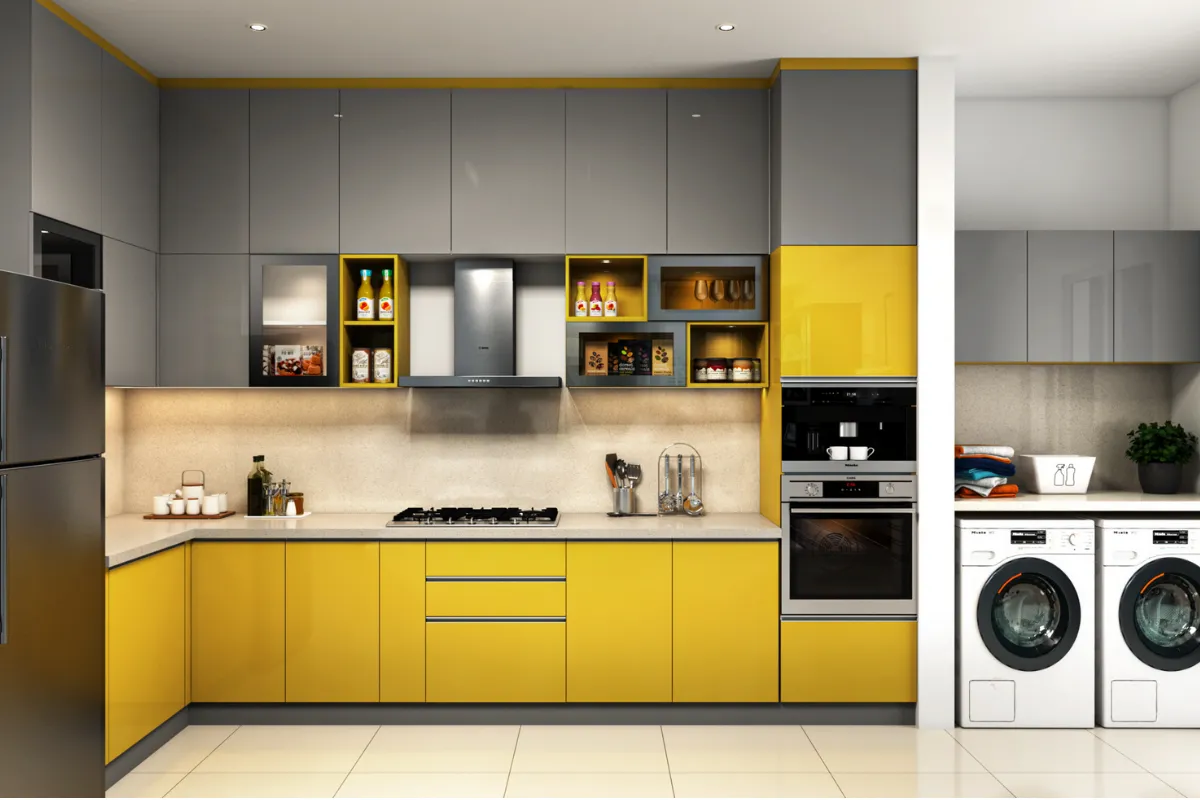
Comparative Pricing Strategies
Pricing is one of the most critical factors for any homeowner. Lowe’s kitchen cabinets are priced competitively and appeal to a broad demographic. However, the prices often reflect national brand markups, distribution costs, and standardized features. Promotional discounts are frequently offered, but they apply to select products or specific periods.
Local cabinet stores may offer wholesale pricing models, especially for contractors or bulk buyers. Some businesses pass on savings directly to the customer by streamlining operations or working with regional suppliers. As a result, customers may receive equal or better quality at a reduced price, depending on the material and complexity of the order.
Value Beyond the Price Tag
While sticker prices are important, they don’t represent the full value. Hidden costs—such as delivery, assembly, or modification—can add up quickly. A locally owned cabinet store in Tempe might offer inclusive pricing, making the overall cost more predictable. The ability to speak directly with the supplier also minimizes misunderstandings about what’s included.
Installation Standards and Craftsmanship
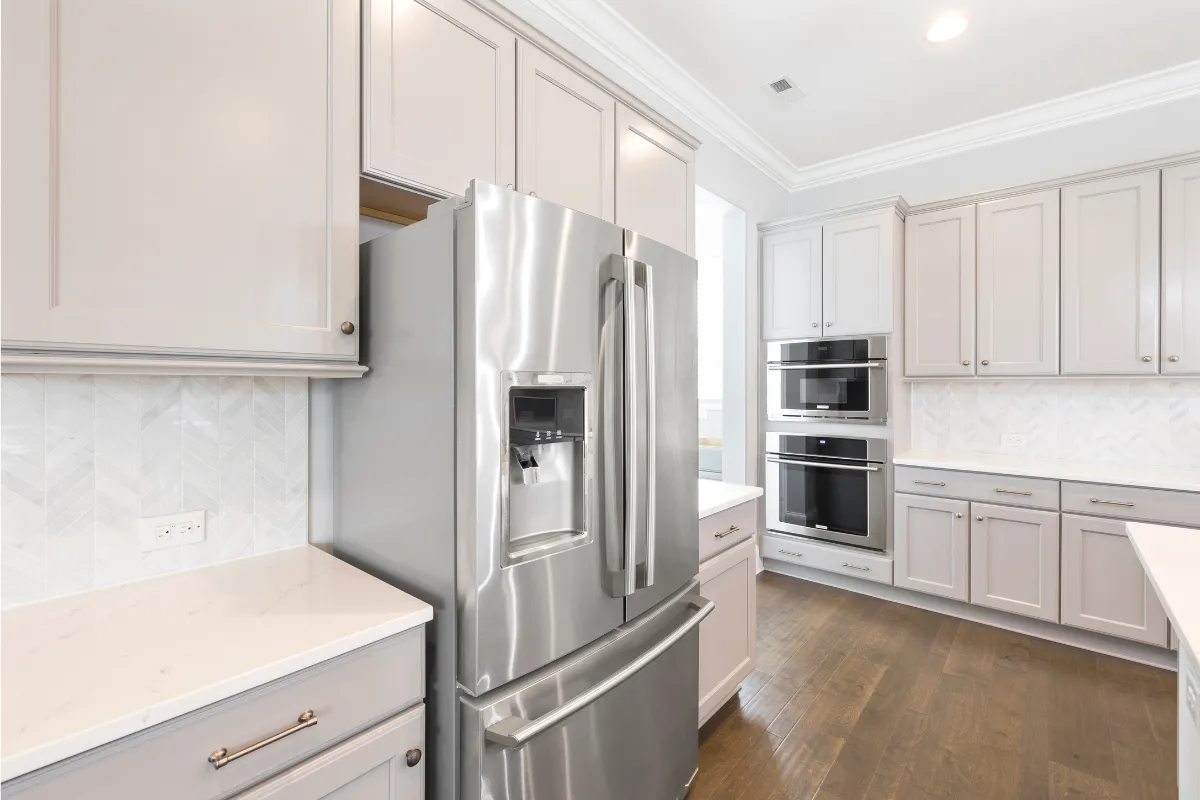
Contractor Network and Oversight
Lowe’s typically subcontracts installation to third-party providers. While this model can be efficient, oversight may vary depending on the assigned contractor’s experience and availability. Communication between the store, installer, and homeowner must be managed carefully to avoid delays or misinterpretations.
Local shops often rely on trusted in-house teams or long-term partnerships with a select group of installers. This leads to better project continuity and clearer expectations. Homeowners benefit from direct access to the team responsible for both fabrication and installation, which fosters accountability.
Quality Assurance and Final Touches
The quality of the installation often determines how the cabinets function and appear over the long term. Proper alignment, secure anchoring, and smooth operation all require a skilled hand. Local businesses usually have quality checks built into their workflow, ensuring that everything from hinges to handles meets a certain standard before project completion.
After-Sale Support and Customer Relationships
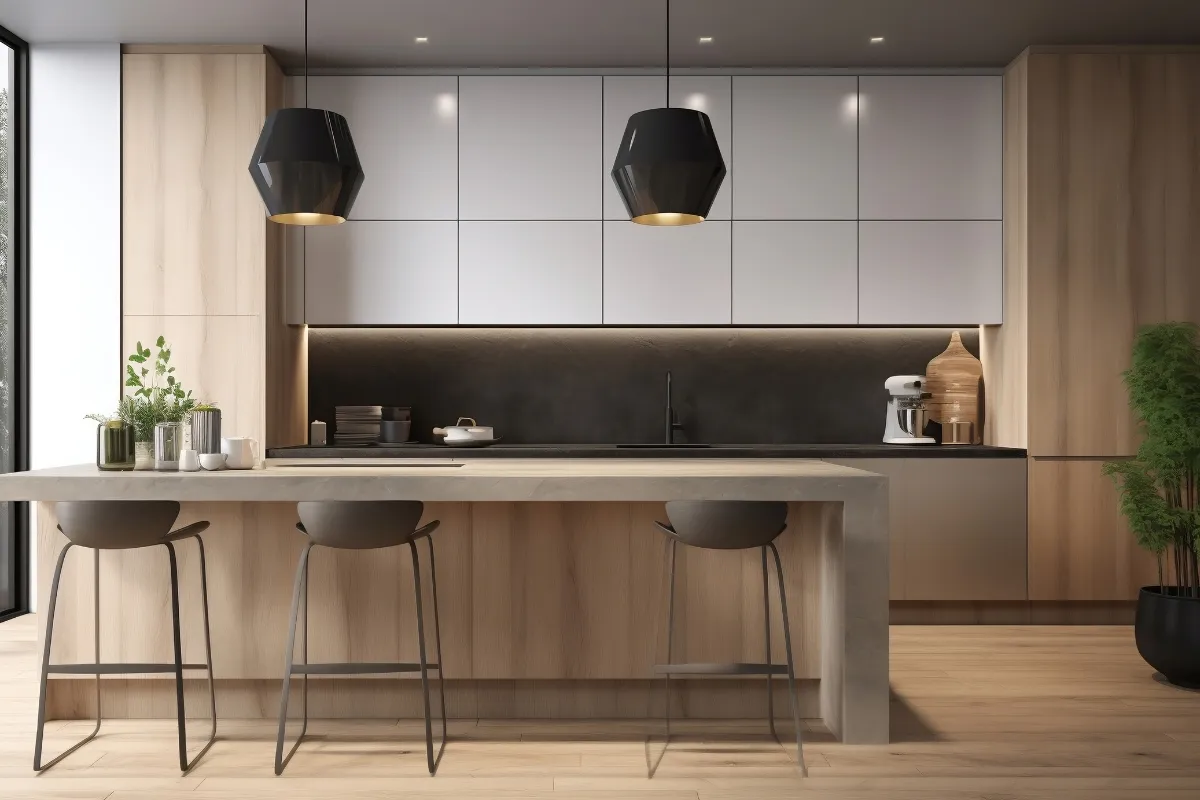
Warranty and Repair
Lowe’s honors manufacturer warranties, which typically range from limited 1-year to lifetime guarantees depending on the brand. However, navigating warranty claims may involve multiple parties, including the cabinet manufacturer and the installer.
Local stores often offer service warranties that are easier to navigate. Because of their size, they can be more flexible in resolving minor issues without layers of approval. Many also provide direct repair services or adjust cabinetry on-site if something doesn’t meet expectations.
Long-Term Relationship and Repeat Service
Many homeowners remodel their homes in stages. Having a reliable local cabinet provider creates an ongoing relationship that simplifies future projects. Repeat clients often receive faster service, custom pricing, or priority scheduling. This level of long-term commitment is less common in larger retail environments, where transactions are typically viewed independently.
Community Impact and Local Support
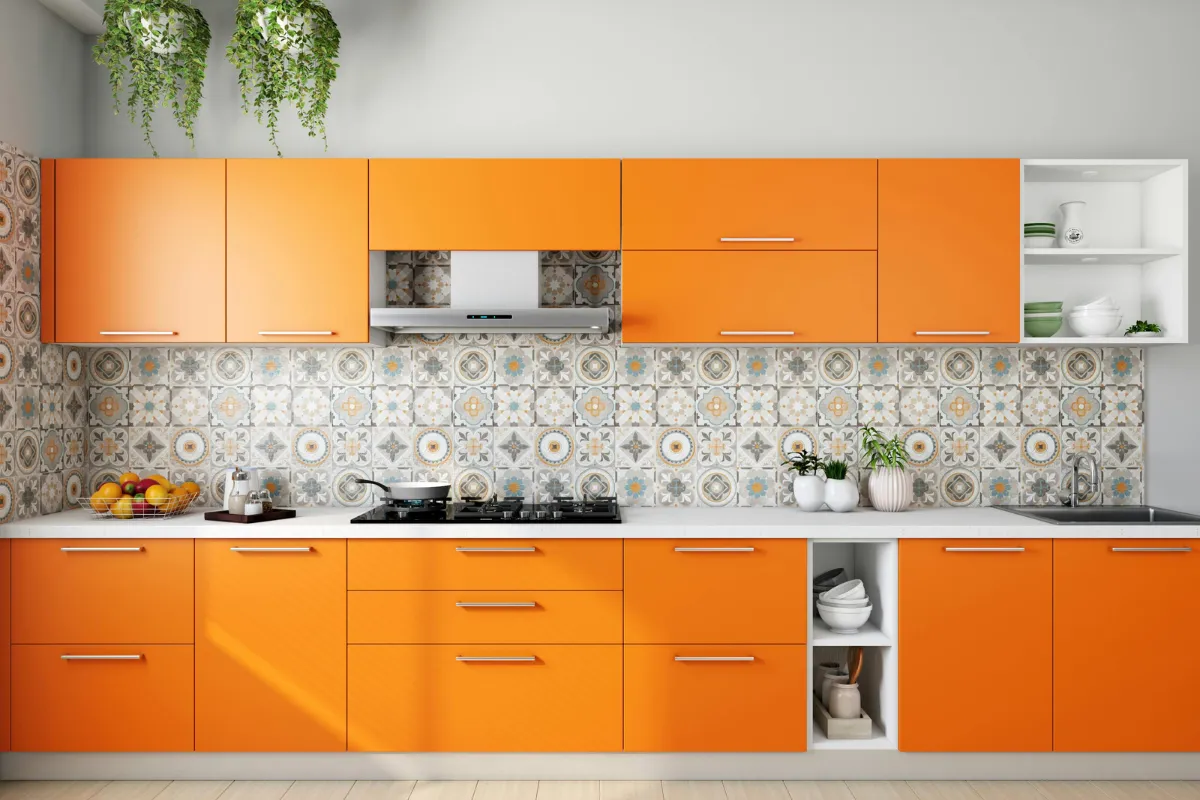
Economic Benefits of Supporting Local Business
Buying from a local cabinet shop helps strengthen Tempe’s small business community. These businesses often source materials locally, hire from within the community, and reinvest in regional growth. The financial and social impact extends beyond individual projects.
Additionally, local cabinetmakers often stay up-to-date on regional trends, architecture, and customer preferences, which allows them to offer relevant design advice rooted in the local lifestyle.
Is There a Clear Winner?
In truth, the best option depends on the needs of the homeowner. Lowe’s kitchen cabinets offer reliable, brand-name solutions with broad appeal, convenient financing, and consistent inventory. For projects that require speed and minimal customization, Lowe’s is a practical and accessible choice.
However, for those seeking deeper personalization, pricing flexibility, and hands-on service, local cabinet stores in Tempe provide compelling advantages. Their ability to offer customized solutions, attentive service, and competitive pricing positions them as a worthy alternative—especially for homeowners who value quality craftsmanship and a collaborative design process.
Discover the C4L Cabinetry Advantage in Tempe, AZ
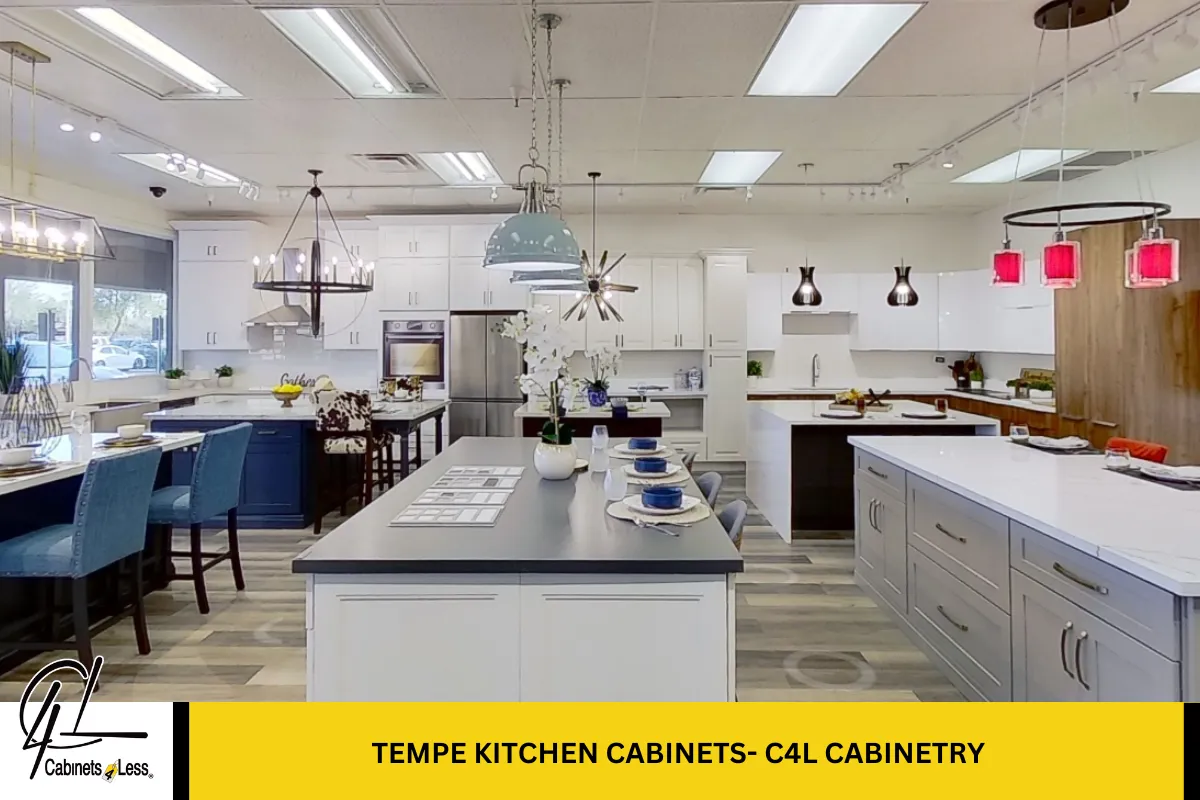
At C4L Cabinetry, we take pride in helping homeowners and contractors in Tempe achieve their dream spaces with affordable, beautiful, and durable cabinets. Whether you’re planning a full kitchen remodel, upgrading a bathroom, or adding storage to your home office, our cabinets are built to impress and designed to last.
We specialize in custom and semi-custom cabinetry that fits your vision and your budget. Our wholesale pricing model allows us to offer up to 70% off big box store prices without compromising on quality. From personalized design consultations to seamless installation, we guide you through every step of your cabinetry journey.
Call us today at (480) 758-5829 to get started or visit our local showroom to see our stunning cabinet selections in person.
Frequently Asked Questions About Kitchen Cabinets in Tempe, AZ
1. Are custom cabinets worth it compared to stock options from big-box stores like Lowe’s?
Yes, custom cabinets are worth the investment—especially if you’re looking for long-term value, style consistency, or unique functionality. Here’s why:
- Made to fit: Custom cabinets are designed specifically for your kitchen dimensions and layout.
- Higher-quality materials: Many custom cabinetmakers use solid wood or plywood instead of particle board.
- Greater personalization: Choose your exact finish, door style, hardware, and internal storage features.
- Durability: Custom cabinets are built with long-term use in mind, often lasting decades.
In contrast, stock cabinets from large retailers may offer:
- Lower upfront cost.
- Limited sizes and finishes.
- Faster turnaround times.
Ultimately, if you’re renovating for longevity or resale value, custom cabinetry offers better quality and design options. Stock cabinets work well for quick upgrades or budget flips. Still, they may lack the personalization that makes your kitchen truly yours.
2. How do I compare cabinet materials and finishes between local stores and Lowe’s?
Comparing cabinet materials is crucial for both durability and style. Here’s a breakdown of what to look for:
Common cabinet materials:
- Solid wood: Premium, long-lasting, usually found in higher-end or custom cabinets.
- Plywood: Durable and moisture-resistant; often used in semi-custom cabinets.
- MDF (Medium Density Fiberboard): Smooth and affordable; great for painted finishes but not as water-resistant.
- Particle board: Budget-friendly but more prone to sagging and water damage over time.
Finish types to compare:
- Stained: Enhances natural wood grain.
- Painted: Clean, modern look, but may chip over time.
- Thermofoil: Vinyl-coated; good for moisture resistance, but may peel with heat.
- Laminate: Affordable and easy to clean, but not as high-end in appearance.
Tip: Ask each supplier—whether it’s Lowe’s or a local shop—for a sample door to compare weight, build, and finish up close before you buy.
3. What is the typical turnaround time for kitchen cabinets from local stores vs Lowe’s in Tempe, AZ?
Turnaround time can vary greatly depending on what type of cabinets you choose and the supplier’s capacity. Here’s a general timeline:
Lowe’s Cabinet Timelines:
- In-stock (RTA): Available immediately or within 1–3 days.
- Semi-custom: Typically takes 4–8 weeks to arrive.
- Custom or special orders: May take 6–10 weeks or more, depending on manufacturer and shipping.
Local Cabinet Store Timelines (in Tempe):
- Custom-built locally: Can range from 3–6 weeks depending on material availability and shop workload.
- Wholesale selections or semi-custom: Often ready within 2–4 weeks.
Other factors that affect delivery:
- Material availability (especially during peak renovation season).
- Installer schedules and availability.
- Additional services like demolition or finishing.
Local stores often offer more transparent and flexible timelines. In contrast, big-box stores depend on third-party manufacturers and longer supply chains.
4. How can I save money on kitchen cabinets without sacrificing quality?
There are smart ways to save money on kitchen cabinets—without going for the cheapest option. Here are effective strategies:
- Choose semi-custom cabinets.
They offer a balance of flexibility and affordability, often at a fraction of the cost of full custom solutions.
- Opt for quality materials on the box/frame.
Plywood boxes with simple door styles can be more durable than cheaper particleboard with flashy finishes.
- Avoid unnecessary add-ons.
Skip glass panels, lazy susans, or custom inserts unless you truly need them.
- Shop locally.
Tempe cabinet stores offer wholesale pricing that may beat national retailers by 40–70%.
- Reuse or refinish.
In some cases, refinishing or replacing doors can only be cost-effective for light updates.
- Wait for seasonal sales or promotions.
Many cabinet providers run specials in the spring and fall.
Always ask for a detailed quote and compare apples-to-apples in terms of material, finish, and installation before making a decision.
5. What’s included in the cabinet installation process from local stores vs Lowe’s?
Installation services can differ depending on the vendor you choose. Here’s what you can typically expect:
Lowe’s Installation (third-party):
- Independent contractors install cabinets.
- Installation is scheduled after the cabinets arrive.
- May include tear-out, basic fitting, and hardware installation.
- Electrical or plumbing adjustments are not included.
- Post-installation follow-up may vary based on contractor availability.
Local Cabinet Store Installation (in-house or local contractors):
- Often includes personal project walkthroughs before and after.
- Better communication between designer, builder, and installer.
- May offer custom fitting and site-specific adjustments.
- Coordination is typically faster since everyone works under the same business umbrella.
Extra services to confirm before signing:
- Disposal of old cabinets.
- Minor wall repairs or patching.
- Appliance alignment assistance.
- Final touch-up and clean-up.
Always read the installation agreement and ask who is accountable for issues post-install. Local companies are more involved in project management from start to finish.
Disclaimer: C4L Cabineytry is not affiliated with, endorsed by, or sponsored by Lowe’s or any of its subsidiaries. All brand names, logos, and product trademarks mentioned are the property of their respective owners. They are referenced solely for comparison and informational context.
Read more: Wholesale Cabinets vs. Custom: What’s Right for Your Tempe Kitchen Remodel?
